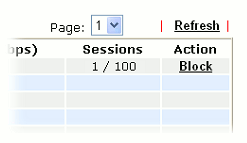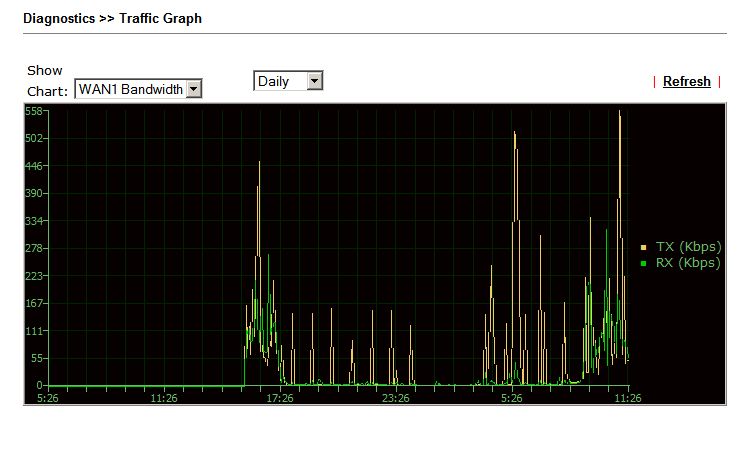
General Router FAQ
Data Flow Monitor

|
General Router FAQData Flow Monitor |

|
With the Data Flow Monitor you can check the number of sessions or the amount of bandwidth being used at a given time by a specific IP address. Also you can block a particular IP address from accessing the Internet for 300 Seconds (5 Minutes) to free up some bandwidth for important data transfers.
With the traffic graph you can check the total amount of bandwidth usage or number of sessions established for last 36 hrs or a week from the time you load the traffic graph page.
To check real time bandwidth usages go to:
Diagnostics > Data Flow Monitor and enable it

Refresh Seconds Use the drop down list to choose the time interval for refreshing data flow monitor page automatically.

Refresh - Click this link to refresh Data Flow Monitor page manually.
IP Address - Displays the IP addresses of various devices on the network which are actively transmitting the data.
TX rate (kbps) - Displays the transmission speed of the monitored device.
RX rate (kbps) - Displays the receiving speed of the monitored device.
Sessions - Displays the number of sessions established by a specific IP address at a given time.
Action Block - Can prevent specified IP address from accessing the Internet for 300 Seconds or 5 minutes.

Unblock - If you have blocked a specific IP address by clicking on the Block link you can unblock it manually before 5 miniutes if required.

To check the Traffic Graph go to Diagnostics > Traffic Graph

The Horizontal axis represents the time in hours or days depending on your view selection (Daily/Weekly). The Vertical axis represents different units and it depends on the view selection i.e. Bandwidth or Sessions.
For WAN1/WAN2 Bandwidth chart, the vertical axis represents the number of transmitted and received packets in Kbps. For the Sessions chart, the vertical axis represents the number of NAT sessions.
NOTICE : This document is © SEG Communications and may not be distributed without specific written consent. Information and products subject to change at any time without notice.